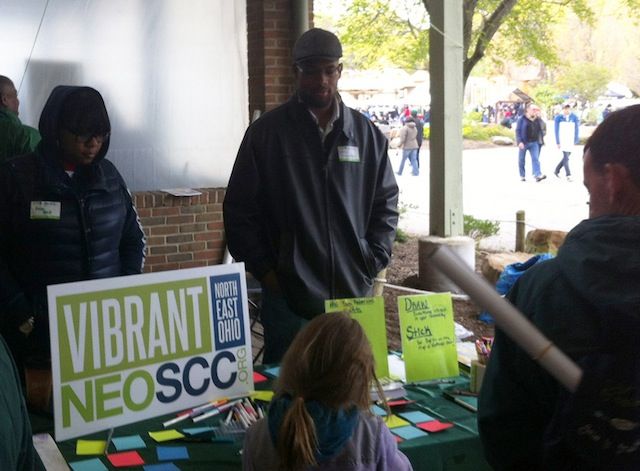Regionalism, from Paris to Portland, offers cities with closely woven outlying suburbs opportunities to broaden their tax bases, increase minimum wages and develop unified approaches to transit — which could, in turn, give low-wage workers better access to jobs. Advocates have touted these benefits for years. Now, a new report explores how regional collaboration can help spur economic growth. It came at an ideal time.
Paris plans on moving to regionalism in 2016. Cincinnati has a collaborative that focuses on workforce development in the greater region, not just within city limits. The Northeast Ohio-based Fund for Our Economic Future, which along with the Knight Foundation released the report today, isn’t a regional authority on government and taxes, but a collaboration of philanthropies attempting to shape the region’s economy.
The Fund was born out of fear in 2004 when Northeast Ohio, with its four large metro areas and more than 4 million people, was trying to address its bleak long-term economic future. A group of philanthropies banded together to leverage grant money and forge a more cohesive economic strategy. Since its inception, the Fund has put together more than $90 million and landed almost twice that in economic development grants. (Jennifer Bradley and Bruce Katz wrote about the Fund in their new book, The Metropolitan Revolution, excerpted here.)
It’s not all good news, though. Like most of the country, Northeast Ohio’s unemployment rate still has not returned to pre-recession levels. There’s no indication that it will anytime soon.
But the report details the Fund’s early successes and what other regions could learn from them. We picked out three lessons that we found the most useful.
1) Data Is Key
You hear this a lot, from the front office of baseball franchises to New York’s Economic Development Corporation: Use the information and analysis at your fingertips. “What Matters To Metros”, an annual report from the Fund, explores Northeast Ohio’s economic indicators — like educational attainment, land use and government efficiency — which helps shape strategies. Policymakers and city leaders learn things they might not have known about before they looked at the hard numbers. “Research can show the urgency to act around vital issues that were not being addressed collaboratively because they were not clearly quantified,” the authors write.
2) You Need Outside Funding
Struggling regions can’t find money on their own. Budgets are tight and staffs are stretched thin. But you have to invest money to make money. The Fund put together a small grant that afforded a group from 12 counties the time to assemble a comprehensive proposal for HUD funding. Its proposal — let’s not forget these things take time and analysis — resulted in a $4.25 million grant. The Knight Foundation’s researchers put it more simply: “Fund the process of convening multiple institutions to develop proposals for grants.” It sounds like a no-brainer, but this, to me, seems invaluable. A calculated and minuscule investment could result in more grants and funding.
3) Private Sector Needs To Follow Through
There’s nothing wrong with help from those in the private sector. Their ideas (and deep pockets) are an invaluable resource. But as the authors write, private actors shouldn’t only inform the strategy. They have to help execute. Basically, big ideas need to go from thoughtful presentations to concrete strategies, and the folks espousing them need to help carry them out.
The report touches on other struggles and successes the Fund has seen in its infancy, like the latitude afforded philanthropies predicated on trust in the community. But it’s hard to ignore the major lessons here. Data is hugely important, investing in groups that find funding can enlarge your pools of grant money, and big thinkers must be instrumental in turning those grand ideas into reality.
The Equity Factor is made possible with the support of the Surdna Foundation.

Bill Bradley is a writer and reporter living in Brooklyn. His work has appeared in Deadspin, GQ, and Vanity Fair, among others.

















